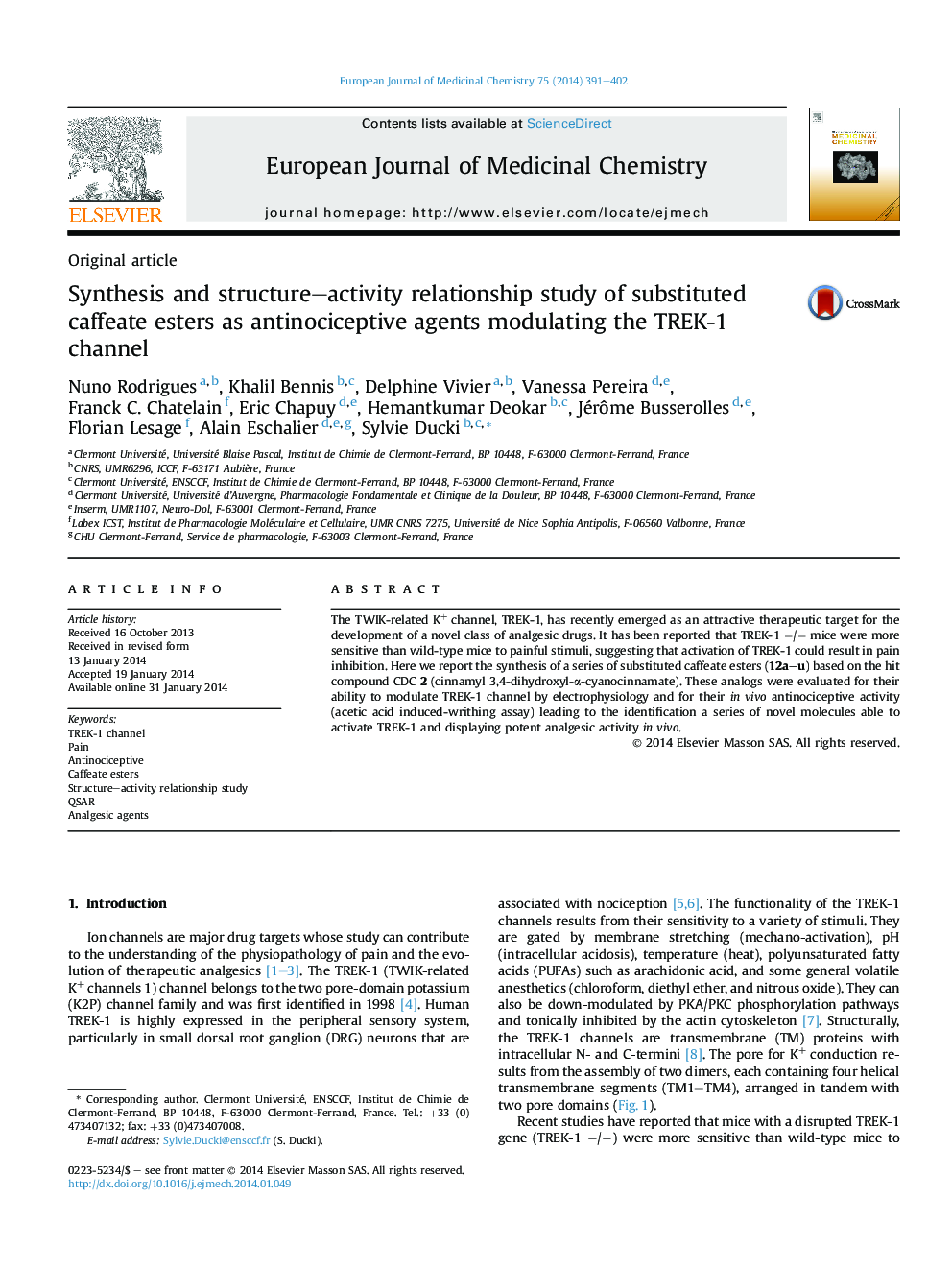| Article ID | Journal | Published Year | Pages | File Type |
|---|---|---|---|---|
| 1397375 | European Journal of Medicinal Chemistry | 2014 | 12 Pages |
•Substituted caffeate esters, based on CDC 2, were synthesized.•Compounds 12a–u were evaluated for their antinociceptive activity in vivo.•The ability of compounds 12a–u to modulate the TREK-1 channel was assessed.•Compound 12u was able to activate TREK-1 channels at 20 μM (RTREK-1 = 2.87).•Compound 12u possessed antinociceptive activity (50.1% writhes inhibition) at 10 mg/kg.
The TWIK-related K+ channel, TREK-1, has recently emerged as an attractive therapeutic target for the development of a novel class of analgesic drugs. It has been reported that TREK-1 −/− mice were more sensitive than wild-type mice to painful stimuli, suggesting that activation of TREK-1 could result in pain inhibition. Here we report the synthesis of a series of substituted caffeate esters (12a–u) based on the hit compound CDC 2 (cinnamyl 3,4-dihydroxyl-α-cyanocinnamate). These analogs were evaluated for their ability to modulate TREK-1 channel by electrophysiology and for their in vivo antinociceptive activity (acetic acid induced-writhing assay) leading to the identification a series of novel molecules able to activate TREK-1 and displaying potent analgesic activity in vivo.
Graphical abstractFigure optionsDownload full-size imageDownload as PowerPoint slide
